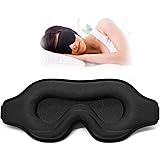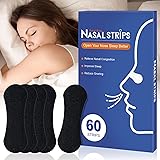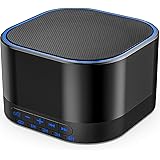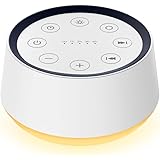Best and Worst Sleeping Pads: An In-Depth 2023 Review for Backpackers
For those who venture into the wilderness, whether for a weekend escape or a multi-day trek, the quality of a sleeping pad is frequently underestimated. It is often considered a critical component of any sleep system, providing both insulation and comfort. In the accompanying video, an experienced backpacker shares his insights into the top-performing and underperforming sleeping pads he has utilized over the past two years, offering a practical look at what works—and what doesn’t—in real-world conditions. This comprehensive guide expands upon those observations, delving into the technical specifications and nuanced considerations that inform the selection of the ideal sleeping pad.
The quest for the perfect sleeping pad is a personal journey, influenced by a myriad of factors including trip duration, seasonal requirements, and individual comfort preferences. A selection of pads, ranging from budget-friendly options to high-performance, four-season models, has been meticulously evaluated. This analysis aims to illuminate the key attributes that contribute to a pad’s effectiveness, ensuring that a more informed purchasing decision can be made.
Understanding the Essential Criteria for Sleeping Pad Evaluation
Determining the best and worst sleeping pads involves a systematic approach, evaluating them against several crucial parameters. These criteria are designed to provide a holistic view of a pad’s performance, balancing practical utility with comfort and cost. The three primary aspects considered in the video, and expanded upon here, are weight, function (including R-value and season suitability), and price.
Weight: The Ultralight Imperative
For backpackers, especially those covering long distances, every ounce carried is a deliberate choice. A lightweight sleeping pad can significantly reduce the overall pack weight, contributing to increased endurance and enjoyment on the trail. However, reductions in weight are sometimes achieved at the expense of durability or insulation, creating a delicate balance that must be struck based on specific trip requirements. Pads that offer an exceptional warmth-to-weight ratio are highly valued in the ultralight community.
Function: R-Value, Seasonality, and Comfort
The primary function of a sleeping pad is to provide insulation from the cold ground and to offer a comfortable surface for rest. Insulation is quantified by its R-value, a standardized measure of thermal resistance. A higher R-value indicates better insulation. For context, an R-value of 1.0-2.0 is generally suitable for summer camping, 2.0-3.0 for three-season use (spring, summer, fall), and 4.0+ for winter conditions. Pads with an R-value exceeding 5.0 are typically recommended for extreme cold.
Beyond insulation, comfort is paramount. Factors influencing comfort include the pad’s thickness, internal baffling structure, and overall dimensions. A thicker pad can absorb more irregularities on the ground, while specific baffling designs can prevent the sleeper from rolling off or experiencing pressure points. The season in which a pad will be used dictates the necessary R-value, thereby influencing its weight and packed size. A pad designed for summer may be insufficient for colder temperatures, leading to uncomfortable and potentially unsafe situations.
Price: Balancing Cost and Performance
The cost of a sleeping pad can vary significantly, from under $100 to several hundred dollars. While budget pads can offer excellent value for occasional use or less demanding conditions, premium options often provide superior insulation, comfort, durability, and a lower weight. It is often advised that a long-term investment in a quality pad is made, especially for frequent adventurers, as it can drastically improve the outdoor sleeping experience. The price-to-performance ratio is a key consideration, ensuring that the investment aligns with the expected utility and lifespan of the product.
The Contenders: Evaluating Individual Sleeping Pads
Based on extensive field testing, several sleeping pads were singled out for their distinct characteristics. These evaluations encompass their strengths, weaknesses, and ideal use cases, providing a detailed perspective on their performance.
The “Worst” Performer: Sea to Summit Ether Light XT Extreme
Despite its promise, the Sea to Summit Ether Light XT Extreme has been identified as a significant disappointment, primarily due to critical insulation failures. In one instance, a user experienced freezing conditions at 20 degrees Fahrenheit, even when the pad was supplemented with a foam sleeping pad underneath, which should not occur with a pad boasting an R-value designed for such temperatures. While comfort was noted as a positive aspect when used in warmer conditions, its substantial packed size is a major drawback for backpacking. This bulkiness makes it impractical for hikers where pack volume is a premium, directly contradicting its marketing as a backpacking sleeping pad.
Best on a Budget: Klymit Static V Insulated
For those seeking an affordable yet functional option, the Klymit Static V Insulated emerges as a strong contender. With an ASTM R-value of 1.9, it is deemed suitable for two-season use, capably handling milder conditions. Its generous 23-inch width provides ample sleeping space, contributing to a more comfortable night’s rest. Priced under $100, this pad represents exceptional value, making it an ideal choice for new backpackers or those who only require a pad for temperate climates. It is often recommended that it be paired with an additional foam pad for slightly colder shoulder season use, enhancing its versatility.
Ultralight Champion: Therm-a-Rest Uber Lite
The Therm-a-Rest Uber Lite is frequently regarded as a top choice for ultralight enthusiasts and long-distance hikers, where minimal weight is the ultimate priority. This pad, with an R-value of 2.3, is suitable for fringe seasons, such as early spring or late fall, offering a balance of warmth and weight savings. Its lightweight design ensures that it can be carried with ease, significantly reducing the burden on extended treks. However, the pursuit of extreme lightness often necessitates compromises in terms of durability and overall comfort when compared to heavier, more robust pads. Its thin material means careful site selection is crucial to prevent punctures, although repairs can often be made on the trail.
Four-Season Versatility: Nemo Tensor Insulated
The updated Nemo Tensor Insulated pad has received considerable acclaim for its enhanced performance. Previously holding a 3.5 R-value, the current version has been improved to an impressive 4.2 R-value without any noticeable changes in weight, size, or appearance. This upgrade firmly positions it as a four-season pad, capable of providing reliable insulation across a broad range of temperatures. Its comfort and robust construction make it a favorite among those who prioritize a good night’s sleep in diverse environments. The advancements made in its thermal efficiency highlight ongoing innovations in sleeping pad technology.
Comfort and Value: Big Agnes Q-Core SLX
The Big Agnes Q-Core SLX is frequently recommended for its exceptional comfort and mid-range pricing. With an R-value of 3.2, it is well-suited for three-season camping, providing sufficient warmth down to approximately freezing temperatures. Its notable thickness contributes significantly to comfort, absorbing ground irregularities effectively. Currently available at around $120, this pad offers outstanding value, making it a compelling option for those seeking a balance of comfort, warmth, and affordability. It is often considered a great “buy now” option due to its current sale pricing, providing a high-quality experience without a premium cost.
Enhanced Comfort and Warmth: Big Agnes Rapide SL
As a close relative to the Q-Core SLX, the Big Agnes Rapide SL elevates both comfort and warmth. It boasts a higher R-value of 4.5, making it highly competitive with other leading four-season pads like the Nemo Tensor Insulated. While sharing similar weight and packed size characteristics with the Nemo, the Rapide SL is often perceived as being more comfortable due to its increased thickness and integrated side baffles. These raised edges create a more secure sleeping platform, giving the impression of a wider pad and preventing the sleeper from rolling off. This design feature is particularly appreciated by active sleepers or those who frequently shift positions during the night.
The All-Season Powerhouse: Therm-a-Rest NeoAir XTherm
The Therm-a-Rest NeoAir XTherm is frequently lauded for possessing one of the best warmth-to-weight ratios on the market. Its impressive 6.9 R-value ensures exceptional warmth, allowing users to remain comfortable in extremely cold conditions, even when sleeping directly on snow. This high insulation rating, combined with its relatively low weight, makes it an ideal choice for year-round use across various climates. Furthermore, the pad’s high denier nylon construction contributes to its remarkable durability, rendering it quite resistant to punctures and tears. While it may not offer the same plush comfort as some thicker pads, its reliability and thermal performance are often deemed superior, making it a “bombproof” option for rugged adventurers.
Choosing Your Ideal Sleeping Pad: Factors Beyond the Review
While specific reviews provide valuable insights, the ultimate decision for a sleeping pad is highly individualized. Several additional factors should be carefully considered to ensure the chosen pad aligns perfectly with personal needs and outdoor pursuits.
Trip Duration and Climate
The length of a trip greatly influences the required durability and comfort. For shorter excursions, a slightly less robust but lighter pad might suffice. Conversely, extended expeditions in challenging climates necessitate a highly durable, well-insulated pad. The specific climate, including expected temperatures, humidity, and ground conditions, dictates the necessary R-value. A pad with an R-value of 4.0 or higher is generally recommended for shoulder seasons and winter camping, especially in regions like Wisconsin where cold temperatures are prevalent.
Sleep Style and Dimensions
Individual sleep preferences play a crucial role. Side sleepers often benefit from thicker pads that offer more cushioning for hips and shoulders. Active sleepers might appreciate pads with edge baffles that help contain them. Furthermore, the width and length of the pad should accommodate the user’s body size, ensuring that the entire body is insulated from the cold ground. A wider pad can significantly enhance comfort for those who toss and turn or simply prefer more space.
Budget Considerations and Long-Term Value
As discussed, price is an important factor. It is often suggested that one views a sleeping pad as an investment in comfort and safety. While a budget-friendly option may be appealing initially, a more durable and versatile pad might offer better long-term value, reducing the need for frequent replacements. The potential to use one pad across multiple seasons can also justify a higher upfront cost.
The Role of Accessories: Pumps and Patches
Many modern sleeping pads benefit from the use of a small air pump, such as the Flex Tail Tiny Gear pump mentioned in the video. These devices facilitate rapid inflation and, crucially, prevent moisture from breath being introduced into the pad’s insulation, which can degrade its thermal performance over time. Carrying a repair kit is also essential; even “bombproof” pads can sustain damage, and a quick patch can save a trip. Understanding how to properly inflate and care for a pad can significantly extend its lifespan and maintain its performance.
The Ultimate Decision: One Pad for All Seasons?
The challenge of selecting a single sleeping pad for every conceivable situation is formidable, as highlighted in the video. The ideal “one pad to rule them all” must strike a near-perfect balance between extreme warmth, acceptable weight, and sufficient comfort. The Therm-a-Rest NeoAir XTherm, with its unparalleled 6.9 R-value and robust construction, frequently emerges as the top choice for an all-season solution, particularly for those in colder climates. Its ability to perform in sub-freezing temperatures without significant weight penalty makes it a highly versatile option.
However, the Big Agnes Rapide SL also presented a compelling argument for its inclusion in the top tier, offering a higher degree of comfort due to its thickness and edge baffles, coupled with a solid 4.5 R-value. For users prioritizing comfort and a slightly less extreme warmth requirement, the Rapide SL proves to be an excellent alternative. Ultimately, the decision often comes down to a subtle trade-off: maximum warmth and bombproof durability versus enhanced comfort. It is important to acknowledge that the best sleeping pads are those that consistently meet the specific demands of the individual adventurer.








